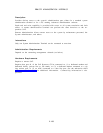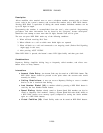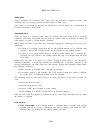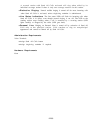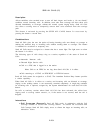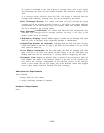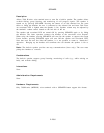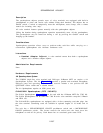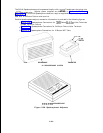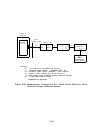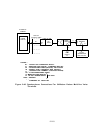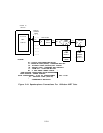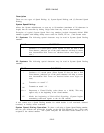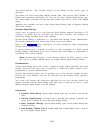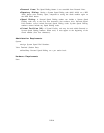SPEAKERPHONE ADJUNCT
Description
The speakerphone adjunct permits users of voice terminals not equipped with built-in
speakerphones to place and receive calls without lifting their handsets. The adjunct has an
On/Off switch, a switch to temporarily mute the microphone, status lamps, and a volume
control (for incoming voice only).
All voice terminal features operate normally with the speakerphone adjunct.
Lifting the handset during speakerphone operation automatically turns off the speakerphone.
The speakerphone may be turned on during a call by pressing the On/Off switch and
hanging up the handset.
Considerations
Speakerphone operation allows users to perform other activities while carrying on a
conversation. Speakerphones also facilitate conference calls.
Interactions
●
Headset Adapter Adjunct: A voice terminal cannot have both a speakerphone
adjunct and a headset adapter adjunct.
Administration Requirements
None
Hardware Requirements
4A Speakerphone System
The 2500SM single-line voice terminal and 2991-type 10-Button MET set require a 4A
Speakerphone System.
The 4A (Figure 2-38) provides a speaker and associated microphone,
indicator lamp and operating controls.
The controls include a two position ON OR
QUIET/OFF rocker switch and a volume control.
The 4A Speakerphone requires an 85B1 power unit.
S101A/S102A Speakerphone (PEC 3163-HFU)
The S101A Speakerphone (Figure 2-38) can be used with the 12-Button MET Set (7203 M).
The S102A Speakerphone can be used with 7300 H-series voice terminals except the 5-Button
and HFAI sets.
The S101A/S102A speakerphones are equipped with a 4-foot connecting cord that plugs into
the voice terminal. Connecting cords are available in optional lengths of 18 inches and 14
feet.
The unit has a SPEAKERPHONE ON/OFF pushbutton switch and a MICROPHONE
ON/OFF pushbutton switch.
The former controls the entire unit; the latter turns the
microphone on and off for privacy.
Each button has an associated green status LED.
2-207



